The renaissance of tiny homes has firmly taken root worldwide as individuals seek simpler, more efficient, and sustainable living solutions.
Understanding and perfecting the tiny homes exterior is a crucial aspect not just for aesthetics but for optimized functionality.
Contents
In this comprehensive guide, we delve into the myriad possibilities and considerations for designing an exterior that is both beautiful and utilitarian.
What Defines a Tiny Home’s Exterior?
In the realm of compact living, the exterior of a tiny home plays an essential role in maximizing the space-efficient design.
From multifunctional design elements to choosing the right cladding options, the exterior significantly influences the overall livability of a tiny home.
Moreover, factors like weatherproofing and natural light optimization create a harmonious balance between beauty and practicality, ensuring your tiny home is both functional and inviting.
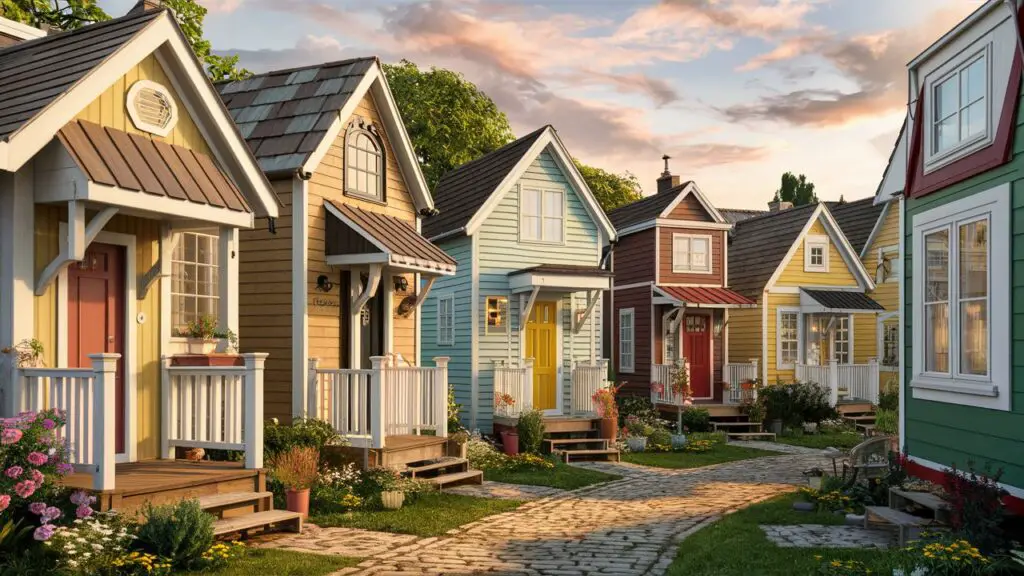
Types of Tiny Homes and Their Exteriors
Mobile Homes
Mobile homes epitomize the versatility and freedom associated with tiny living. Typically built on wheels, these trailer homes and portable dwellings offer unparalleled mobility, allowing occupants to relocate easily.
The exteriors of mobile homes often feature lightweight yet durable materials to withstand constant movement and varying weather conditions.
The curb appeal for small homes is enhanced by space-saving exteriors and sleek finishes that prioritize both aesthetics and practicality.
Modular Construction
Modular construction is becoming a popular approach for building tiny homes, thanks to its efficiency and flexibility.
Modules are factory-built and then assembled on-site, which enables high-quality control and reduced construction time.
The innovative facades of modular homes often incorporate eco-friendly materials and minimalist architecture, giving these homes an elegant, contemporary look.
Whether you’re aiming for rustic charm or a sleek modern design, modular construction offers many possibilities.
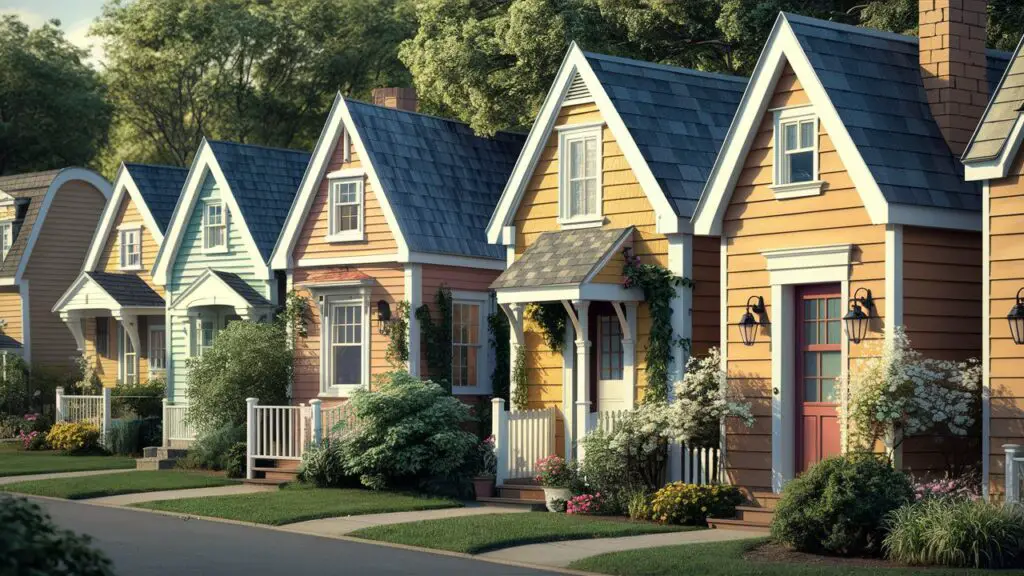
Design Elements to Consider
Minimalist Architecture
Adopting minimalist architecture in the exterior design of tiny homes is all about achieving the quintessential ‘less is more’ principle.
By focusing on simplicity and functionality, minimalist exteriors typically employ clean lines, neutral color palettes, and unembellished forms.
This approach reduces unnecessary ornamentation, creating a straightforward and serene aesthetic that complements the essence of compact living.
Sustainable Housing
Incorporating sustainable housing principles in the exterior design of tiny homes is crucial for reducing your environmental footprint.
Using eco-friendly materials such as reclaimed wood, bamboo, or recycled metal can create a stunning yet sustainable façade.
Furthermore, features like solar panels for off-grid living and rainwater harvesting systems demonstrate a commitment to environmental responsibility.
Off-Grid Living
Off-grid living is an attractive option for many tiny home enthusiasts who wish to reduce their dependence on municipal utilities.
The exteriors of off-grid tiny homes often include solar panels, wind turbines, and systems for water collection and filtration.
Weatherproofing is vital for these homes, ensuring they remain comfortable and functional in diverse climates.
Emphasizing outdoor storage solutions also plays a crucial role in off-grid setups, ensuring all necessities are easily accessible.
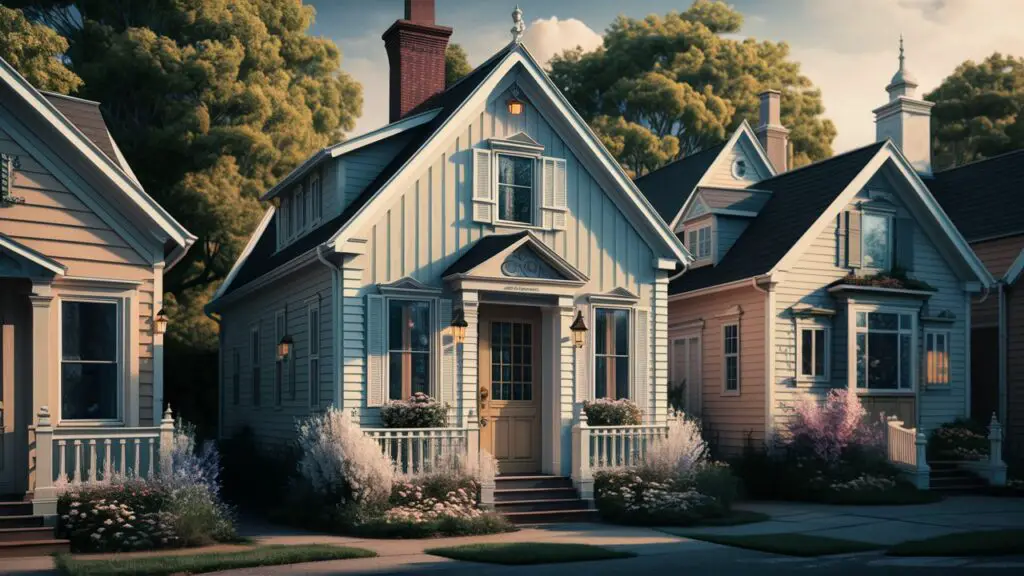
Small Footprint: Making the Most of Limited Space
Space-Saving Exteriors
Space-saving exteriors are a hallmark of well-designed tiny homes. Fold-out decks, rooftop gardens, and movable walls are all features that extend living space without adding to the home’s overall footprint.
Clever use of space and innovative design solutions ensure that every square foot is utilized to its maximum potential, offering both functionality and enhancing the overall aesthetic appeal.
Natural Light Optimization
Optimizing natural light in a tiny home is essential for creating an inviting and comfortable living environment.
Large windows, strategically placed skylights, and glass doors significantly impact the overall feel of the space.
Natural light optimization not only enhances the visual appeal but also contributes to the home’s energy efficiency, reducing the need for artificial lighting and heating.
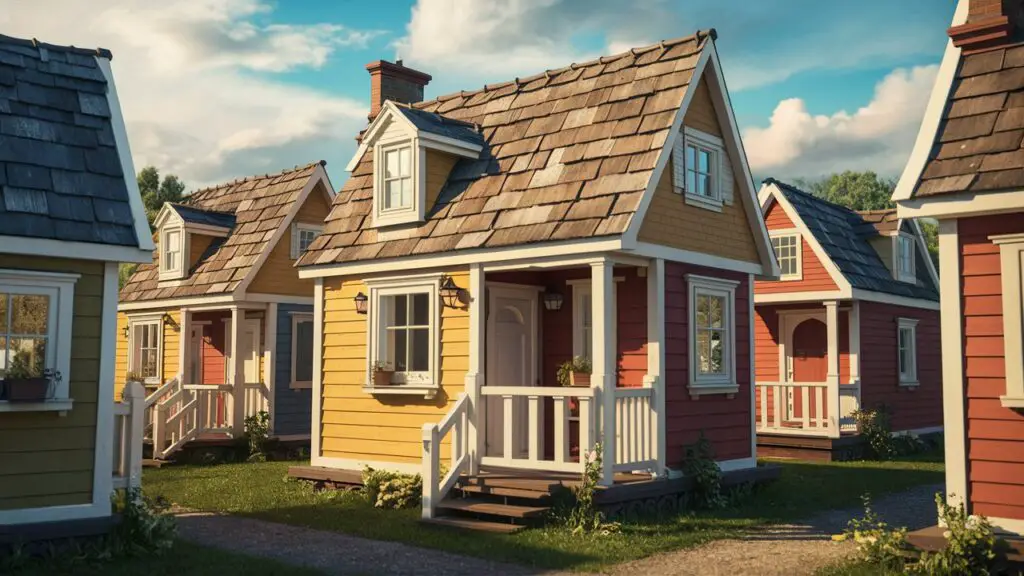
Enhancing Curb Appeal for Small Homes
Creative Exteriors
Creative exteriors are vital for enhancing the curb appeal for small homes. Features such as unique door designs, custom paint jobs, or artistic landscaping can make your tiny home stand out.
Personalized touches convey a sense of character and charm, making homes not just functional, but also an expression of individuality.
Rustic Charm vs. Modern Tiny Houses
Deciding between rustic charm and modern tiny houses can dictate the entire exterior design strategy.
Rustic homes often feature natural materials like wood and stone, exuding a cozy, cottage-like vibe.
Conversely, modern tiny homes usually boast sleek lines, metal finishes, and minimalist aesthetics.
Choosing the right style depends on personal preference and the desired atmosphere of the tiny home.
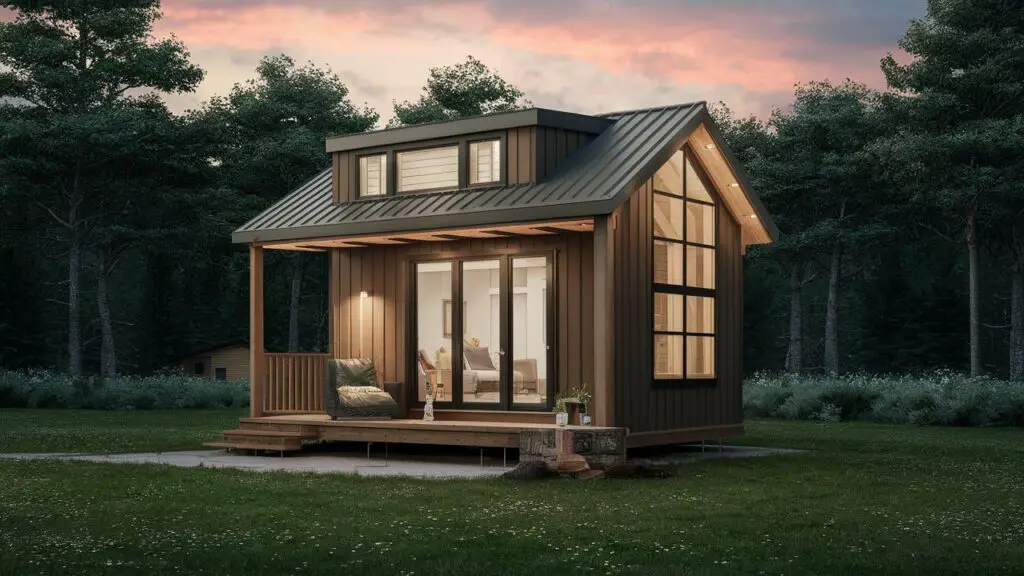
Practical Considerations
Multifunctional Design
Embracing a multifunctional design approach is key in tiny homes where space is at a premium.
Exterior elements like retractable awnings, fold-out furniture, and built-in storage units help maximize usability.
These features ensure that even small spaces can offer all the comforts of larger homes without compromising on functionality or aesthetics.
Tiny House Siding
The choice of tiny house siding can significantly affect the home’s appearance and durability. Options range from traditional wood cladding to more modern materials like vinyl, metal, or fiber cement.
Each material has its advantages and disadvantages, influencing factors such as maintenance requirements, insulation properties, and overall aesthetic.
Outdoor Storage Solutions
Effective outdoor storage solutions are essential for maintaining a clutter-free tiny home. Compact sheds, under-deck storage, and wall-mounted cabinets are excellent ways to maximize available space.
Properly planned storage solutions enhance the home’s functionality, ensuring that all necessary items are easily accessible yet neatly organized.

Enhancing Your Tiny Home Community
Tiny house communities are flourishing, offering a supportive network for like-minded individuals embracing the downsizing lifestyle.
To foster a sense of community, consider exterior designs that promote social interaction, such as shared gardens or communal outdoor seating areas.
Participating in a tiny house community can enhance quality of life, providing a blend of privacy and social opportunities.
Downsizing Lifestyle and Alternative Housing
Adopting a downsizing lifestyle signifies a shift towards simplicity and intentional living. Tiny homes are a prime example of alternative housing, offering efficient, affordable, and sustainable living solutions.
The exterior design of tiny homes plays a crucial role in making this lifestyle appealing, blending aesthetic appeal with functionality.
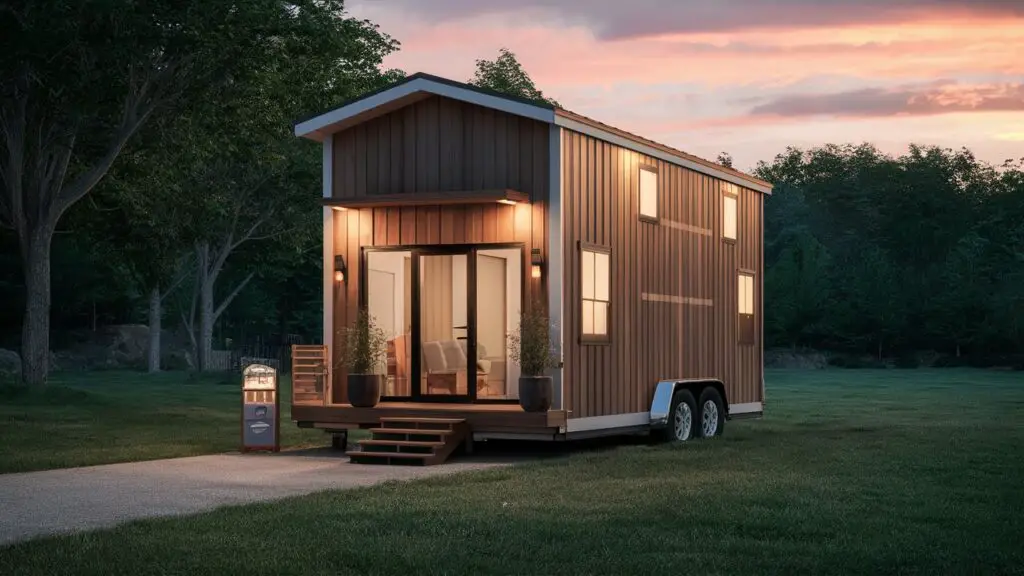
Landscaping and Exterior Maintenance
Small-Scale Landscaping
Implementing small-scale landscaping can significantly enhance the appearance of a tiny home’s exterior.
Features such as potted plants, vertical gardens, and compact flower beds add a touch of nature and beauty to the home.
Thoughtful landscaping can create a welcoming environment and seamlessly integrate the home with its surroundings.
Exterior Maintenance
Maintaining the exterior of a tiny home is essential for ensuring longevity and aesthetic appeal.
Regular upkeep tasks include cleaning the siding, checking for any damage, and ensuring weatherproofing measures are intact.
Seasonal maintenance, such as preparing the home for winter, also plays a crucial role in preserving the exterior’s condition.
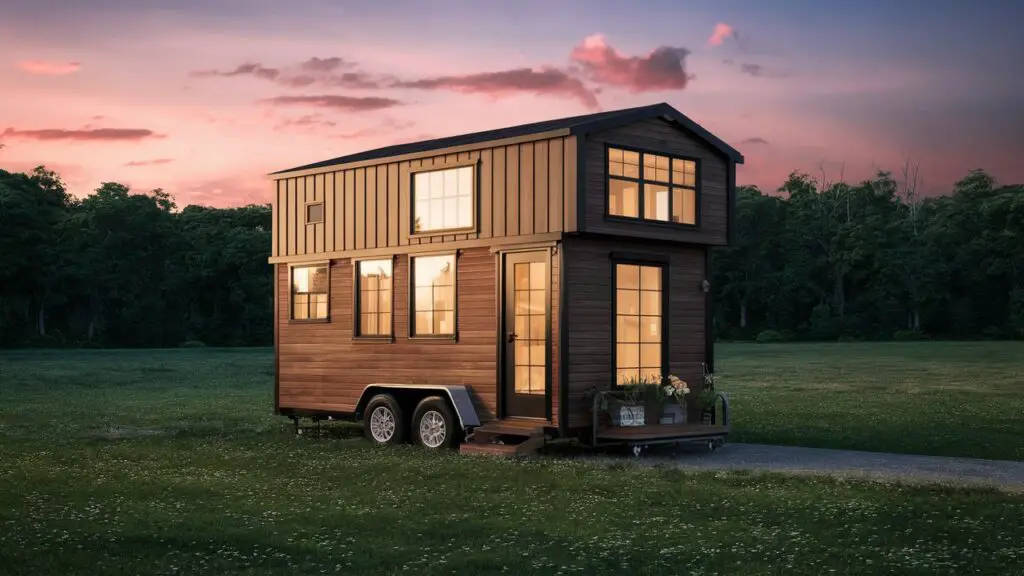
Conclusion
Designing the perfect tiny homes exterior requires a careful blend of creativity, functionality, and sustainability.
By considering factors such as minimalist architecture, sustainable housing, and off-grid living, you can create a beautiful and efficient exterior that complements the overall tiny living experience.
Whether you prefer rustic charm or a modern tiny house aesthetic, the possibilities are endless.
Through thoughtful design and attention to detail, you can make your tiny home not just a dwelling, but a true expression of your lifestyle and values.


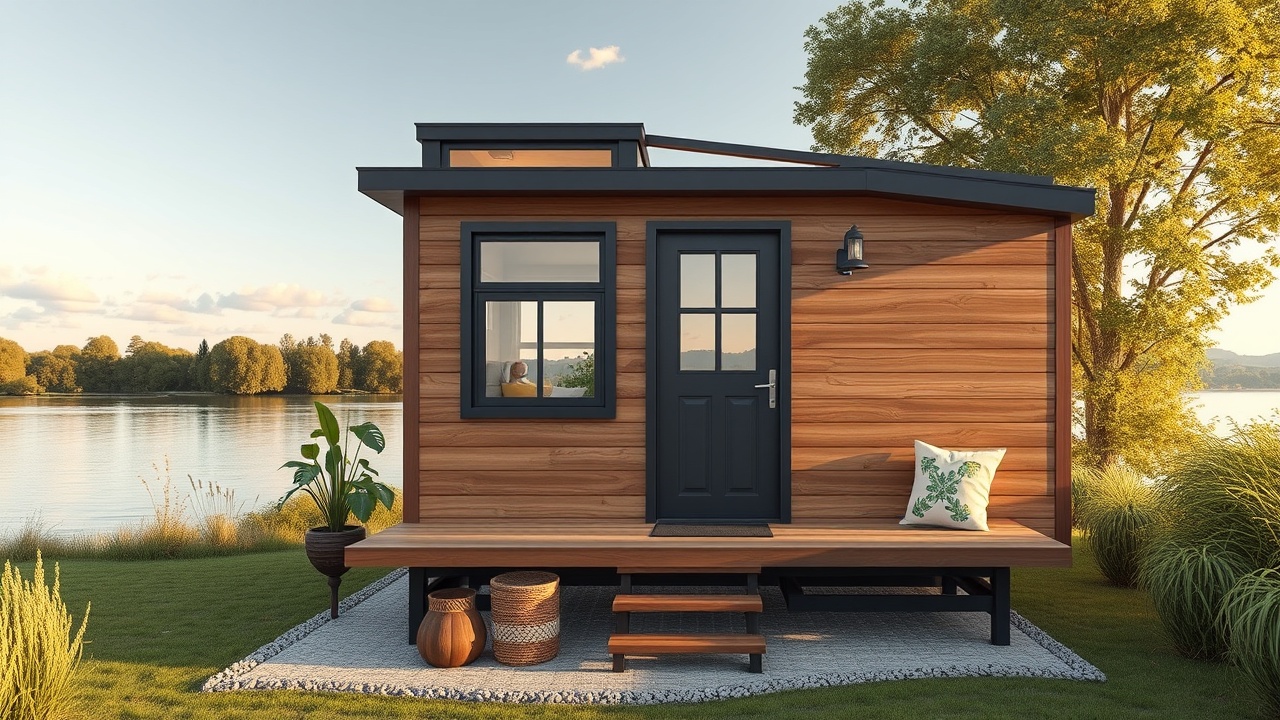
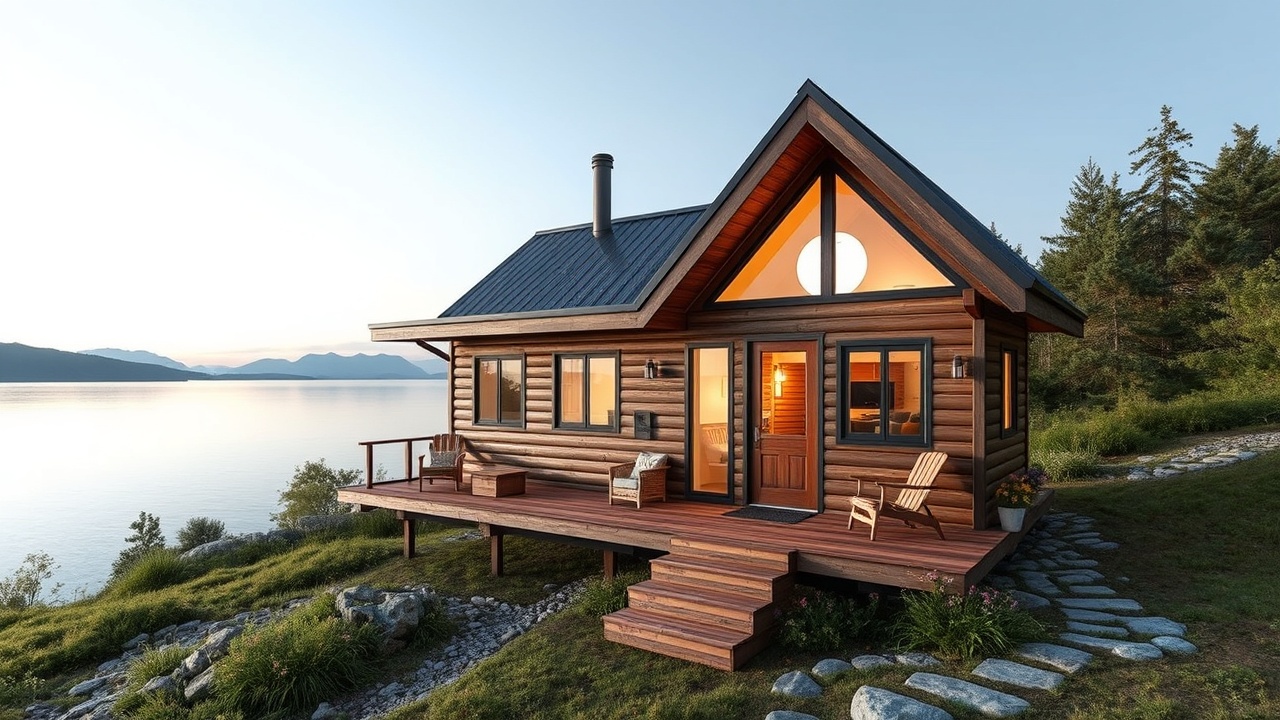
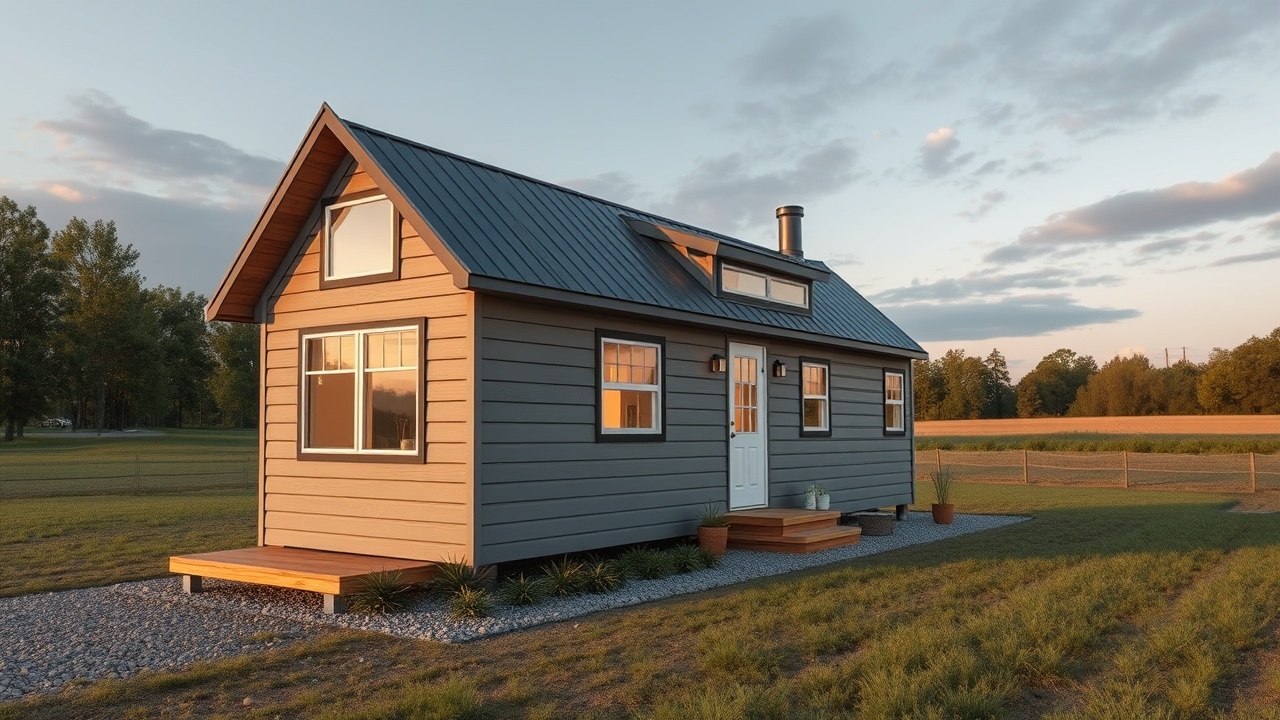
Leave a Reply